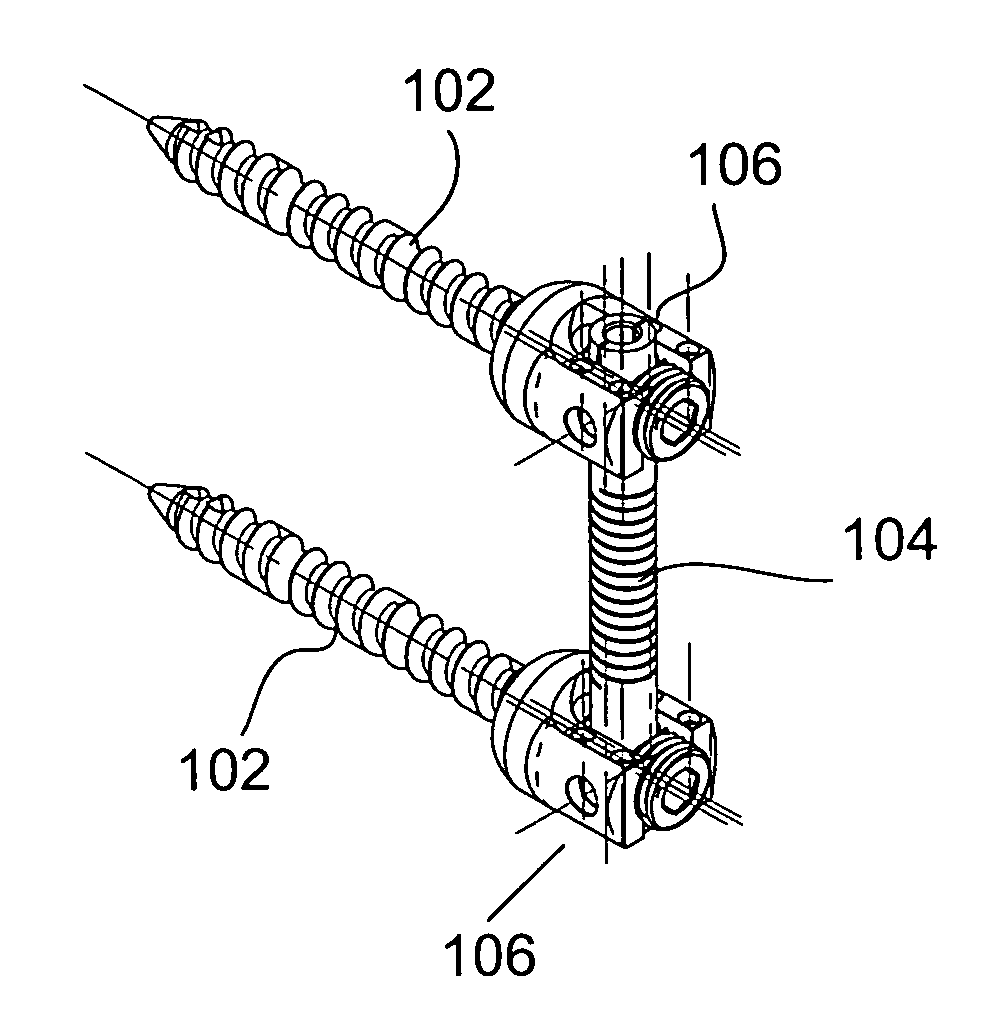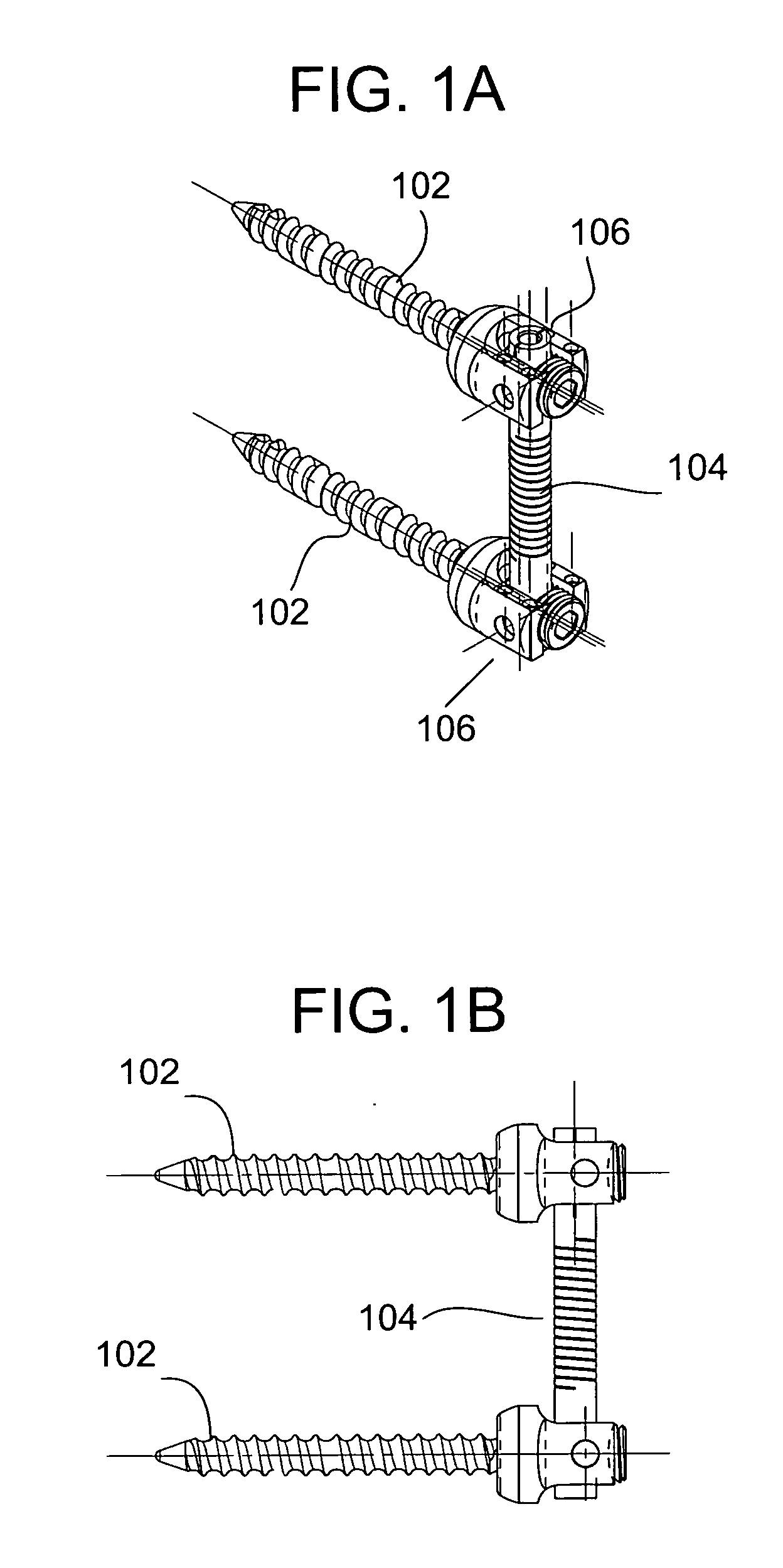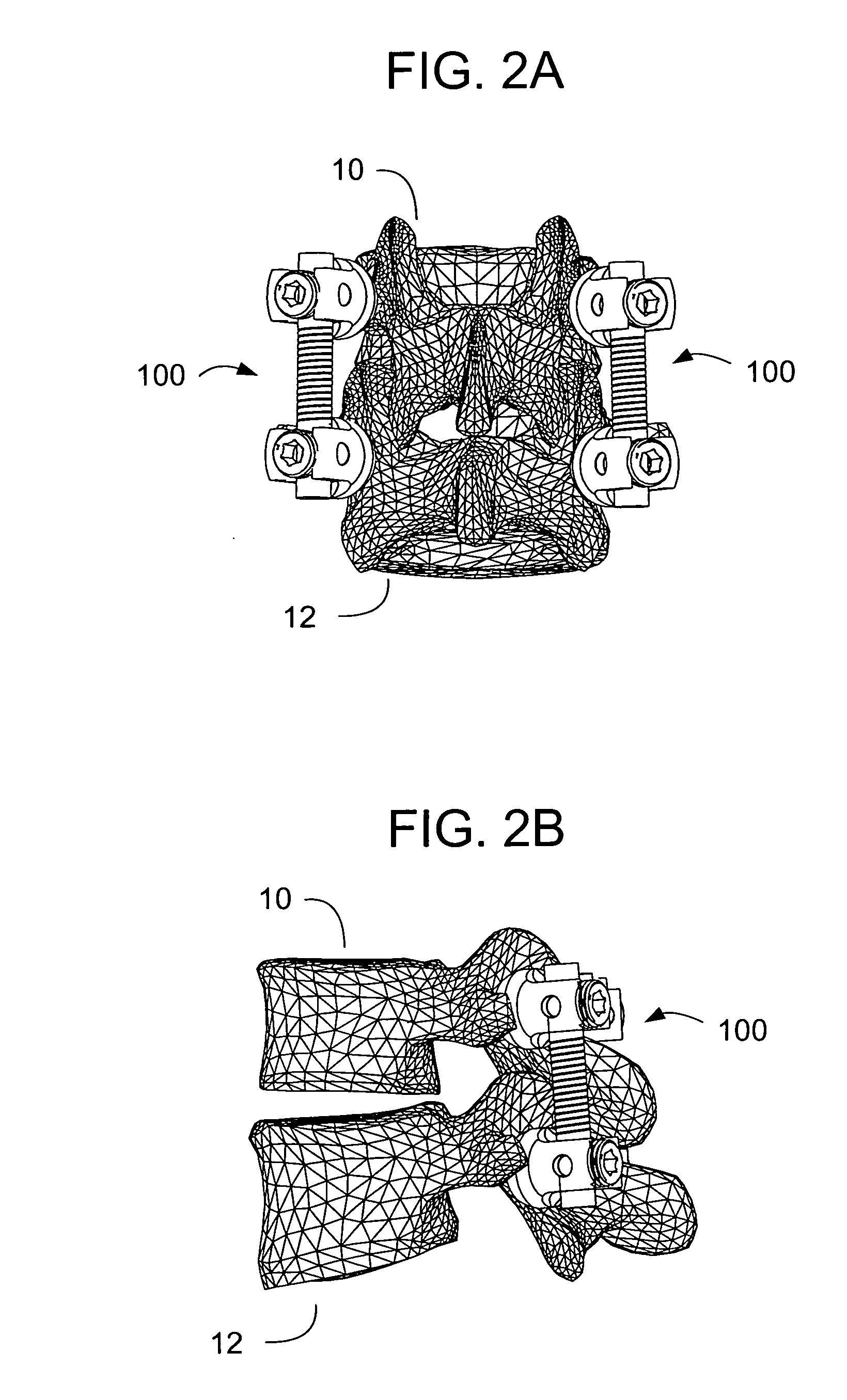Vertebral stabilization using flexible rods
a technology of vertebral stabilization and flexible rods, applied in the field of vertebral stabilization of the spine, can solve the problems of compromising the quality of life of a person, the most common and often debilitating conditions affecting millions of people, and back pain
- Summary
- Abstract
- Description
- Claims
- Application Information
AI Technical Summary
Benefits of technology
Problems solved by technology
Method used
Image
Examples
Embodiment Construction
[0026] FIGS. 1A-B illustrate an embodiment of a spinal stabilizer 100 in accordance with one or more aspects of the present invention. This embodiment of the stabilizer 100 is designed for single level spinal stabilization, preferably from the posterior of the spine. It is understood that the use of the various embodiments of the invention discussed herein has been directed to a specific application of stabilizing the spine; however, other applications are contemplated without departing from the scope of the invention. Indeed, any application in which a conventional solid or flexible rod is called for to stabilize two anatomical bodies is within the scope of the invention.
[0027] As best seen in FIGS. 2A-B, the stabilizer 100 is sized and shaped for bilateral use on a posterior aspect of the spine. In particular, the stabilizer 100 provides stabilization with respect to adjacent vertebral bones 10, 12 of the spine. It is understood that the size and shape of the stabilizer 100 may b...
PUM
 Login to View More
Login to View More Abstract
Description
Claims
Application Information
 Login to View More
Login to View More - R&D
- Intellectual Property
- Life Sciences
- Materials
- Tech Scout
- Unparalleled Data Quality
- Higher Quality Content
- 60% Fewer Hallucinations
Browse by: Latest US Patents, China's latest patents, Technical Efficacy Thesaurus, Application Domain, Technology Topic, Popular Technical Reports.
© 2025 PatSnap. All rights reserved.Legal|Privacy policy|Modern Slavery Act Transparency Statement|Sitemap|About US| Contact US: help@patsnap.com



